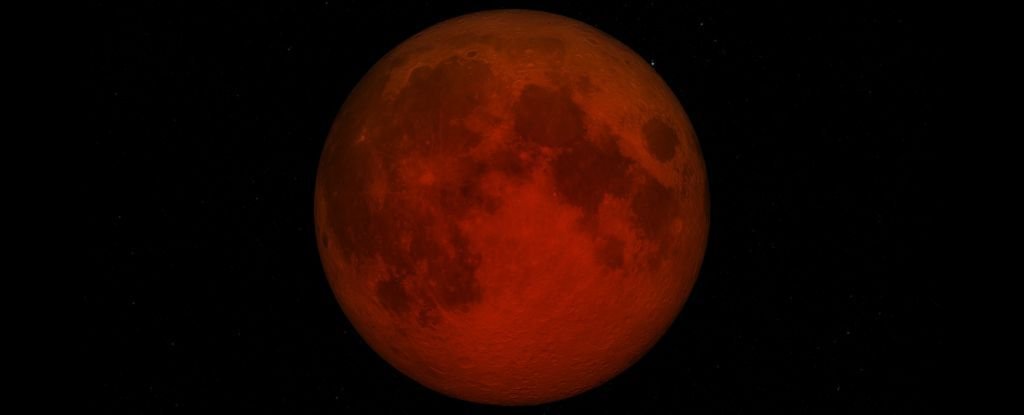A total lunar eclipse is an incredible sight. As Earth passes between the Moon and the Sun, its shadow slips across the face of our satellite so only long, red wavelengths – sunlight refracted by Earth's atmosphere – can slip through, tinting the usually pale Moon blood-red.
That's when we see it from here, on our planet. But from space, the view is very different – and now we can see what that looks like, thanks to the asteroid probe Lucy, led by the Southwest Research Institute (SwRI), launched in October 2021.
At the time of the recent total lunar eclipse, which could be seen on the night of 16 May across most of the Americas, Lucy was at a distance of around 100 million kilometers (65 million miles) from Earth.
"While total lunar eclipses aren't that rare – they happen every year or so – it isn't that often that you get a chance to observe them from an entirely new angle," said planetary scientist Hal Levison of SwRI.
"When the team realized Lucy had a chance to observe this lunar eclipse as a part of the instrument calibration process, everyone was incredibly excited."
Over the course of about three hours, the spacecraft took 86 1-millisecond exposures using its high-resolution, black-and-white L'LORRI instrument, which were sent back home to Earth to be stitched together into a timelapse of the first half of the eclipse.
In the resulting video, Earth and its satellite can be seen in the distance, separated from each other by a distance of about 360,000 kilometers (224,000 miles), both lit by the Sun, off-screen far to the left. The Moon is much fainter than the Sun, so scientists brightened it to make it visible. As the video progresses, the Moon winks out entirely, swallowed by Earth's shadow.
It's a magnificent demonstration of the mechanics of a total lunar eclipse, as well as the capabilities of the L'LORRI camera, which will take images of Trojan asteroids sharing the orbit of Jupiter, at a much greater distance from the Sun.
Because the instrument is designed to operate in a colder thermal environment, the work to obtain the timelapse had to be very carefully conducted – that's why only half the eclipse was imaged, to avoid overheating.
"Capturing these images really was an amazing team effort," said planetary scientist John Spencer of SwRI.
"The instrument, guidance, navigation and science operations teams all had to work together to collect these data, getting Earth and the Moon in the same frame."
The results are not just useful for calibration purposes. They offer us Earthlings a spectacularly different view of our home world and satellite, during one of the most spectacular displays the Moon gives us. And it's breathtaking.
- Karlston
-

 1
1



Recommended Comments
There are no comments to display.
Join the conversation
You can post now and register later. If you have an account, sign in now to post with your account.
Note: Your post will require moderator approval before it will be visible.